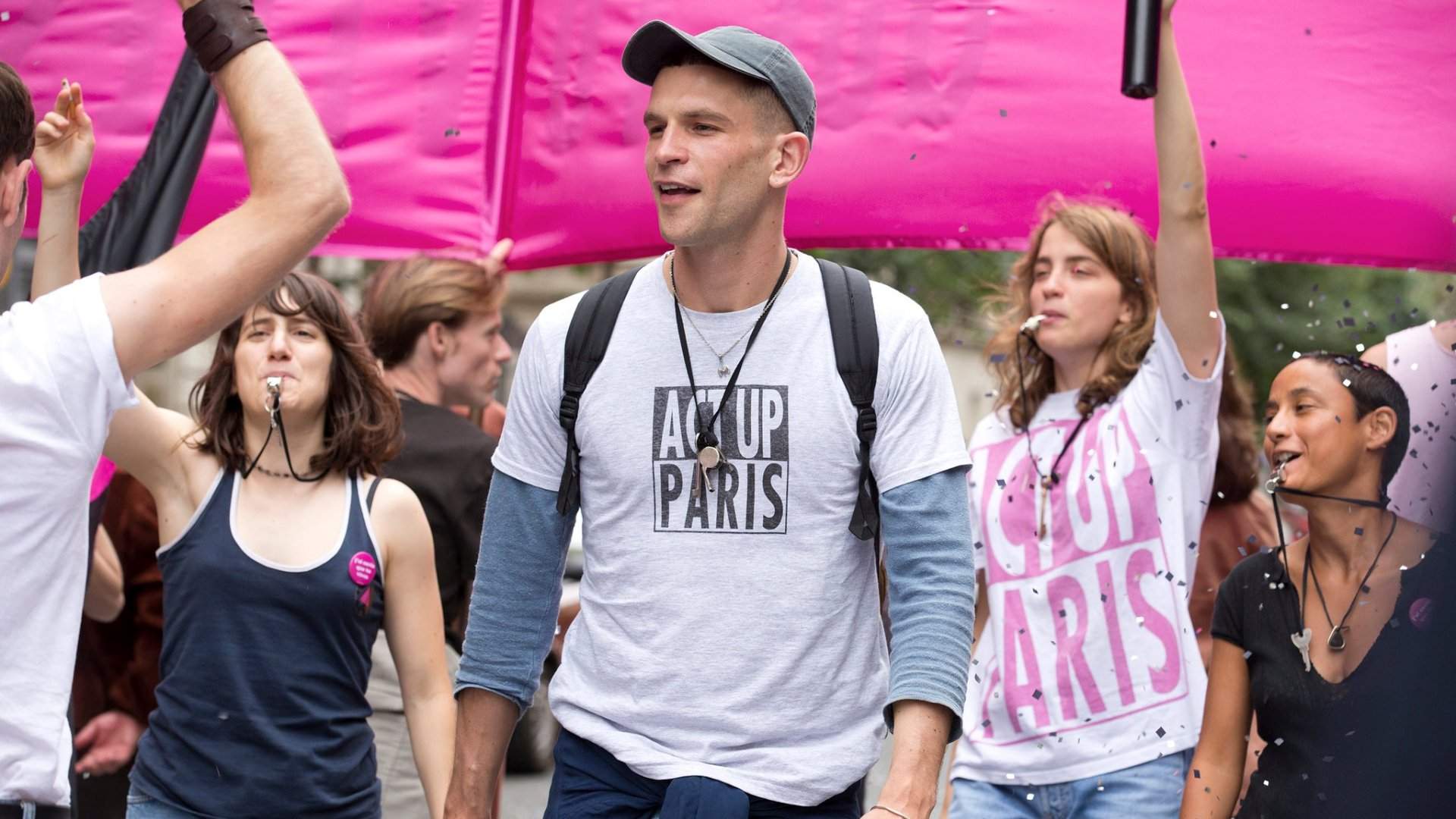BPM (Beats Per Minute)
A powerful, immersive drama about AIDS activism in Paris in the 1990s.
Overview
In its very first moments, BPM (Beats Per Minute) purposefully withholds details from the audience. Adopting the perspective of the film's unseen characters, the camera waits in the wings as a man gives a speech that isn't subtitled for viewers, until the deafening blast of an airhorn interrupts his talking. It's a jarring opening, but the movie is made all the more jolting by its second scene. Sat in a classroom with the Parisian members of HIV and AIDS activism group ACT UP (AIDS Coalition to Unleash Power), BPM positively swamps the audience with information as the group analyse their last public campaign and argue about their next mission. The chatter is loud, fast and passionate, discussing medical specifics, marketing tactics and everything in-between. To provide further detail, the film intertwines glimpses of their activist actions into their heated conversation.
Starting the movie in such a fashion, writer-director Robin Campillo achieves several things. BPM's initial 15 minutes are an immersive onslaught completely by design, plunging viewers into a frenzied, hectic headspace. The two scenes give an indication of how the film will progress stylistically and tonally. More than that, they also ensure the audience truly appreciates the mindset of the characters — allowing viewers to not only watch, but to experience the chaos, anger and uncertainty for themselves. Campillo doesn't stop there, adding a third component. In an ecstatic club-set dance sequence that's as pivotal as everything that precedes it, the audience sees joyous faces moving to the music. After first showing viewers what it feels like to be ignored, then demonstrating the overwhelming nature of the fight for AIDS treatment in the early 1990s, BPM provides a crucial moment of catharsis.
The sidelined, the relentless, the sublime — if Campillo's film has a rhythm, that's it. The movie also has a narrative, charting ACT UP's quest to secure medication at a time before HIV drugs were affordable and easily accessible, from a French government and a pharmaceutical industry that are apathetic at best and cruel at worst. As the group storms into conferences, throws fake blood during office invasions and employs other protest tactics, BPM gets to know several figures on a deeper level. Haemophiliac Marco (Theophile Ray) comes to meetings with his mother Helene (Catherine Vinatier). Organiser Sophie (Adele Haenel) advocates for diplomatic options. Jeremie (Ariel Borenstein) deteriorates, and quickly. Leader Thibault (Antoine Reinartz) and the AIDS-inflicted Sean (Nahuel Perez Biscayart) bicker about peaceful versus aggressive tactics — and Sean also falls for newcomer Nathan (Arnaud Valois), who isn't HIV-positive.
Set to a soundtrack that flits from electronic beats to sorrowful piano, to the pleading chants of ACT UP taking to the streets, what emerges is a movie that's both intimate and expansive. Just as BPM's first scenes leave a definite imprint, so does the cumulative effect of its 143 minutes, weaving personal tales into a sprawling snapshot of a real-life movement. The reverse applies too, with the picture's broader view, particularly in its documentary-like moments, giving context to each character's struggle. It's little wonder that the cast's performances feel both intricate and part of something bigger, particularly Biscayart and Valois' efforts to convey Sean and Nathan's complex romance.
Finding the right actors for the job — actors who can not only deliver stellar work, but can make their roles seem so real that you half expect them to walk off the screen — was one of the hallmarks of Campillo's last film, Eastern Boys. So was an astonishing command of mood and aesthetics, with every directorial choice keeping viewers glued to every frame. BPM shares those traits, but it also boasts something that's all its own: an unwavering, devastating sense of authenticity. Both the filmmaker and his co-writer Philippe Mangeot are alumni of ACT UP, as audiences could probably guess just by watching. A movie this well observed, this drenched in naturalism, this candid and poignant, can only spring from reality.





